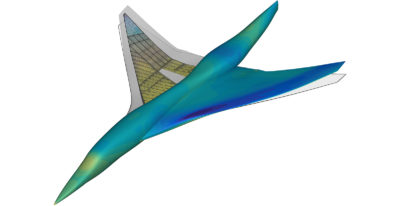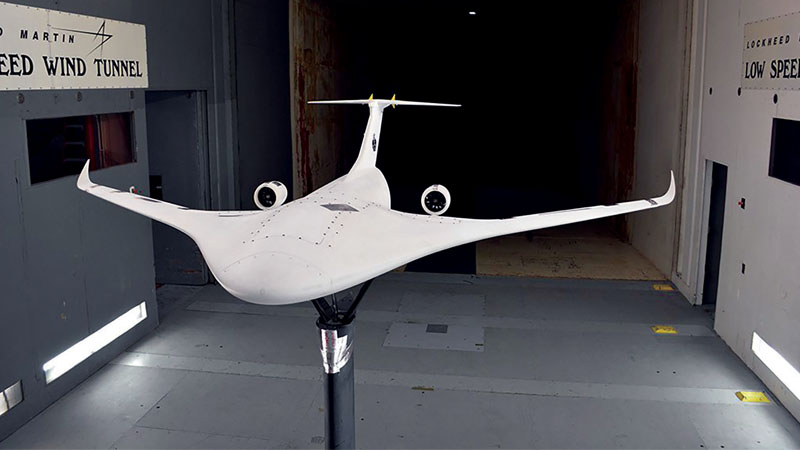Progress made toward nuclear propulsion, in-situ resource utilization
By BRYAN PALASZEWSKI|December 2018
The Nuclear and Future Flight Propulsion Technical Committee works to advance the implementation and design of nonchemical, high-energy propulsion systems other than electric thruster systems.
This year, researchers investigated critical aspects of nuclear thermal rocket propulsion. In this form of propulsion system, hydrogen is heated in a nuclear fission reactor and the hot hydrogen creates thrust, approximately doubling the exhaust velocity compared to the best chemical rocket engine. A team of Aerojet-Rocketdyne, the Ultra Safe Nuclear Corp., NASA and the U.S. Department of Energy expanded the types of design parameters and range of values for the required reactor core of a low enrichment uranium, LEU, nuclear thermal propulsion rocket. These expanded parameters were presented in July at the AIAA Propulsion and Energy Forum to ensure that the best core designs and a wider range of interactions were being captured for later integration into the engine thermodynamic analysis. If the LEU core configuration design parameters are picked arbitrarily based on previous highly enriched uranium designs, LEU configurations will be too heavy, will not achieve criticality for continuous operation, or could have an incorrect power profile and drive up the thermal loads excessively in the engine thermodynamic cycle. Examining many design variables and having well-defined ranges for their values to permit larger combinatorial arrangements and capture critical design interactions. The above-mentioned team conducted a series of detailed analyses to create a performance design map for the most attractive LEU nuclear thermal propulsion engines.
Turning to nuclear fusion, rockets propelled by this technology will create extremely hot plasma with a fusion reaction of deuterium and helium 3. The temperature of this plasma approaches that found at the center of the sun. Powerful magnets contain and then accelerate this plasma for propulsion. In July, researchers at Princeton Satellite Systems Inc. in New Jersey analyzed numerous fusion engine designs and space mission applications. One of the designs was a field-reversed, configuration-magnet design for a compact fusion engine. Another was a fusion engine for a fast Pluto mission. Using a multifluid plasma code for direct fusion drive system, exhaust velocity, thrust and efficiency was modeled as function of input power and gas flow. The engine design produced 10,000 seconds of specific impulse, with 5 newtons of thrust per megawatt of generated fusion power.
Many investigations of the natural resources available in the solar system were conducted in the first half of 2018. Lunar, Martian and other solar system resources were assessed by collaborators from the Ultra Safe Nuclear Corp. and a retired Boeing engineer. Their assessments concluded that without in-situ resource utilization, ISRU, any long-term propulsion architecture is likely unsustainable. There are vast resources available in space for development and use by future space faring societies. Viable propellant technologies are limited by the accessible resources and will require energy to mine and process. Nuclear power on the planetary surfaces will be crucial for the mining and refining processes. There are multiple architectures for space transportation, with each requiring technology development, access to in-situ resources, power, mass transfer, heat transfer and propellant storage systems. Each of these issues drives the economic sustainability of the ISRU system. Both chemical and nuclear propulsion systems derive many benefits from an optimal ISRU system design.
Very speculative research into anti-gravity was conducted and presented in June. Researchers at the Happy Science University of Japan reviewed historical work on anti-gravity effects, devices and theories. The researchers reviewed the likelihood of anti-gravity propulsion for aerospace applications by using existing experimental data and estimated the possible values of space vehicle specific impulse, delta-V and propellant mass ratio. The preliminary results imply that with a theoretical anti-gravity propulsion system, fuel efficiency improves, the mission cost and flight time can be reduced. Even though technologies for anti-gravity propulsion do not exist, in the near future it may be achieved. Future research will refine their simulations of the lunar flights and further investigate the possibilities of anti-gravity propulsion.
Photo: A Princeton field-reversed configuration reactor-2 device during a test at Princeton Satellite Systems Inc. in New Jersey. Credit: Princeton Satellite Systems Inc.



































